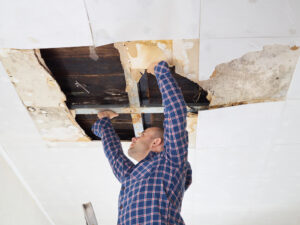A picture-perfect mid-century modern home is a timeless classic. However, even for those who are fortunate enough to possess one, a mid-century house restoration in Australia can be a bit challenging.
In the 1980s and 1990s, many properties from the 1950s and 1960s will have undergone uninspired to downright catastrophic renovations. While it’s simple to lust over an undisturbed time capsule online, it’s a tall order to strike a balance between modern amenities and mid-century authenticity.
Tips for a House Restoration in Australia
Do Your Research
Begin any house restoration project by conducting a preliminary study; look for examples of homes from the past, paying attention to everyday materials, colours, shapes, and textures.
There are plenty of images and illustrations available if you want to see what these homes looked like when they were first built. Of course, you do not have to copy the design from floor to ceiling – this is your home!
But if you are seeking some early inspiration, you can get some beautiful ideas for furniture and wall coverings that can jumpstart your house restoration in Australia.
Talking to your neighbours can help – you might find someone who lived in these houses from the beginning, or at least in their early days. Someone may be able to share family photos with you so you can see how the genuine versions of these residences (rather than the catalogue version) appeared back then.
Don’t Forget the Essentials
When you’re starting a house restoration in Australia, checking your home’s systems is necessary, even if it isn’t as spectacular as terrazzo or as exciting as a stylish pendant lamp. Roofs, electrical, HVAC, plumbing, and sewer lines may be more than 55 years old, and replacing them can be costly but will save you potential damages in the future.
Minimalist and Mid-Century are Two Different Things
Modernism’s streamlined aesthetic and uncluttered look was responsible for achieving this classic style in the past. However, don’t mistake minimalist design as mid-century style.
If you want to recreate the original feel of these homes, don’t assume you have to stick to white, grey, and black colour schemes. Patterns — sometimes abstract, sometimes not – were an essential aspect of the mid-century style.
These styles, which may be used for curtains, pillow covers, wall hangings, and even wallpaper, can make rooms feel far more welcoming than other types of modernism.
Intense, vivid colours are also viable, especially when paired with pristine, freshly painted white walls. Classic reds, bold oranges and yellows, navy and pastel blues, and green all work well in these settings.
If that’s too much for you, a blend of gentle greys and mid-browns with muted mustard and perhaps a dismal turquoise might be a better choice. Remember that the ultimate goal is to have a successful house restoration in Australia and live in a happy and comfortable house.
Keep the Wood Panels
Mid-century architecture – at least good mid-century design – was all about exposing the features so that everyone could appreciate them, which often meant leaving rafters exposed and bringing wood panelling inside along walls.
For a house restoration in Australia, if you want to keep the midcentury feel but don’t want to use so much wood, we suggest adding vividly coloured paintings, more illumination, or even an extra window or two. You can use a variety of methods to make an old, dark space feel new and refreshed.
Hunt the Perfect Timeless Pieces
If we had written this 25 years ago, we would have recommended visiting thrift shops and low-cost local second-hand stores. Unfortunately for you, times have changed, and original 1950s and 1960s tables and sideboards will set you back a significant amount of money.
If you’re not a purist, though, the benefit of a fad growing more popular is that you can buy new variations of it. Consider the “Scandi” interiors trend from a few years ago. Pick and mix furniture from that trend with other findings and your quirky selections.
You can create a vibe that captures the spirit of 60 years ago without spending a fortune on your house restoration project in Australia.
Of course, if you have the financial means to purchase period-appropriate furniture or commission custom-made pieces, all the better. There are large fairs that bring together sellers of classic mid-century pieces with people manufacturing new textiles and fittings ideal for this type of home, in addition to specialised furniture shops.
Make Use Of Your Outdoor Space
In mid-century modern homes, outdoor spaces are an extension of the indoor living space. Don’t overlook them when starting a mid-century house restoration in Australia. Make them accessible, usable, and livable from your house. This could entail installing extra doors to access the spaces.
Resist the urge to add a cottage garden to the exterior of your mid-century marvel. With circular forms and huge paving stones, keep the shapes neat and orderly. Palm trees are a great addition here.
Look for angular geometric shapes and mix and match materials such as flagstone, slate, concrete pads, and wood. The modernist home was designed to have a reduced internal footprint and then link smoothly to the outside.
Final Words

You can accomplish a lot on your own. However, some aspects of the project, particularly those involving structural improvements, will undoubtedly require professional assistance. Of course, if you have a general idea of what you want but don’t know how to make it work, you might want to hire an interior designer.
Send us your design and concepts, and we will be more than happy to be part of your mid-century house restoration project in Australia. Contact us now!








